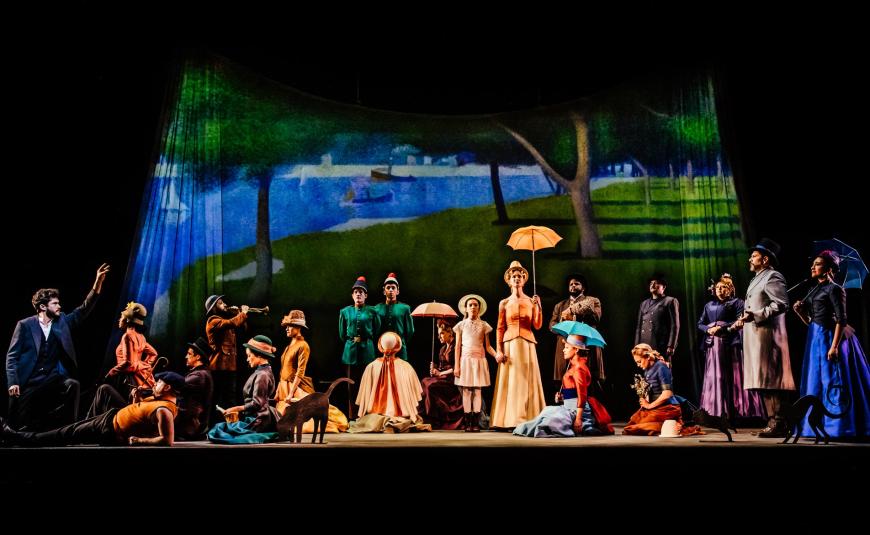
A bearded young man in a somewhat shabby black suit enters and moves downstage, where he is illuminated by a single glaring spotlight. His gaze is enigmatic, a combination of wide-eyed expectation and haunted anxiety. He ponders:
“White. A blank page or canvas. The challenge: Bring order to the whole. Through design. Composition. Tension. Balance. Light. And harmony.”
So begins Stephen Sondheim’s 1984 musical exploration of the world of art and artists, Sunday in the Park With George — the creation that toward the end of his life, Sondheim consistently referred to as his favorite.
Strangely, until this season at the Pasadena Playhouse, Sunday in the Park With George had only once been embraced by a major theater company in Los Angeles — a stunning 1986 production presented by Long Beach Civic Light Opera, starring Robert Yacko and Pamela Myers.
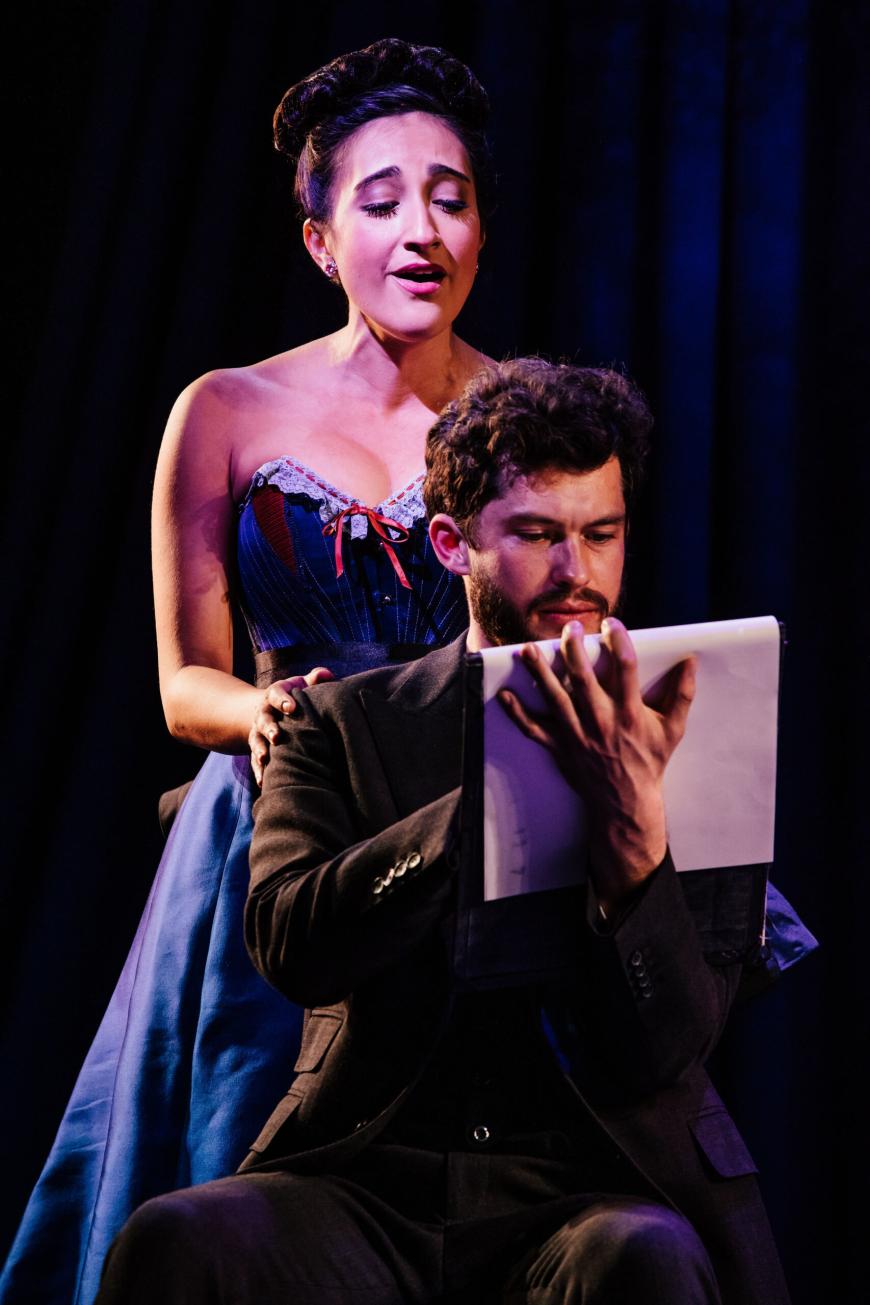
Had the COVID pandemic not caused a cascade of cancellations, the Los Angeles Philharmonic would have presented an eagerly awaited concert version of Sunday in the Park in May 2020, conducted by Gustavo Dudamel and directed by Zack Winokur. The cast was never announced.
If you believe that good things come to those who wait, you’re in luck. The production of Sunday in the Park With George now onstage at the Pasadena Playhouse through March 19 is a superb revival, meticulously directed by Sarna Lapine and starring Graham Phillips as George and Krystina Alabado as his (perfectly named) model, Dot.
The production is part of the Pasadena Playhouse’s Sondheim celebration, which will also include a production of A Little Night Music (opening late April) and two performances featuring one of Sunday in the Park’s original Broadway stars, Bernadette Peters (June 10 and 11).
As the musical begins, the year is 1884. The feverishly intense young man in the black suit is the French painter George Seurat. It is Sunday in Paris on the island of La Grande Jatte, a favorite place for strolling, bathing, fishing, picnicking, and trysting. In the distance the skeletal steel framework of the Eiffel Tower is rising in anticipation of the 1889 Exposition Universelle. Paris is changing, the world is changing, and Seurat is determined to create a new form of art (based on the science of optics) in which the viewer’s eye can melt a myriad number of carefully crafted pinpoint dots of color into a glorious whole. Getting to that point, however, will prove an immense personal and artistic challenge.
One of the clever devices that Sondheim and his collaborator, James Lapine, conceived was to give personalities and backstories to the picturesque gaggle of characters who reside in the finished painting. The result is an interweaving narrative of music and lyrics that follows the creation of the painting from multiple perspectives, by turns humorous, insightful, and poignant.
But it is the central relationship between George and Dot that provides the spine of the musical. In Pasadena, the roles are superbly manifested by Phillips and Alabado. Through George’s eyes we enter the world of artistic observation and share his obsession with pioneering a new visual vocabulary, whatever the costs. (Seurat died tragically young at the age of 31.)
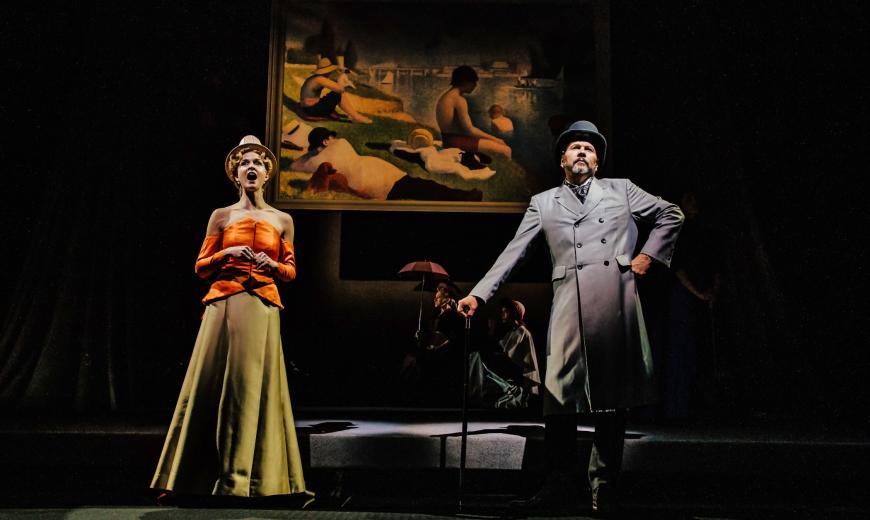
From the moment we meet Dot — who is suffering the heat of a summer day on La Grande Jatte and commands of “don’t move” from George — we see the flip side of the art-making equation. She longs for an emotional commitment from George, which he is incapable of giving until (in a fictional departure from history) she becomes pregnant with George’s child and marries the baker, Louis (understudy Matthew McCoy on for the Feb. 19 performance), who is safe, predictable, protective, and totally uninspired. George and Dot’s opening number, “Sunday in the Park With George,” and all the emotional variations that follow will climax with the completion of the painting — a scene that makes for one of the great moments in American musical theater.
One can only imagine what Sondheim’s score might have sounded like conducted by Dudamel and with the full force of the LA Phil to illuminate all its coloration, quixotic rhythmic shifts, and dramatic nuances — beginning with a simple, shimmering five-note phrase that Sondheim weaves into a through-sung landscape of vocal and orchestral variations.
The Pasadena Playhouse boasts that its production is presenting Sondheim”s “full orchestral version” of the score. If that’s true, the highly amplified 13-member orchestra (conducted by Andy Einhorn) is moderately up to the task.
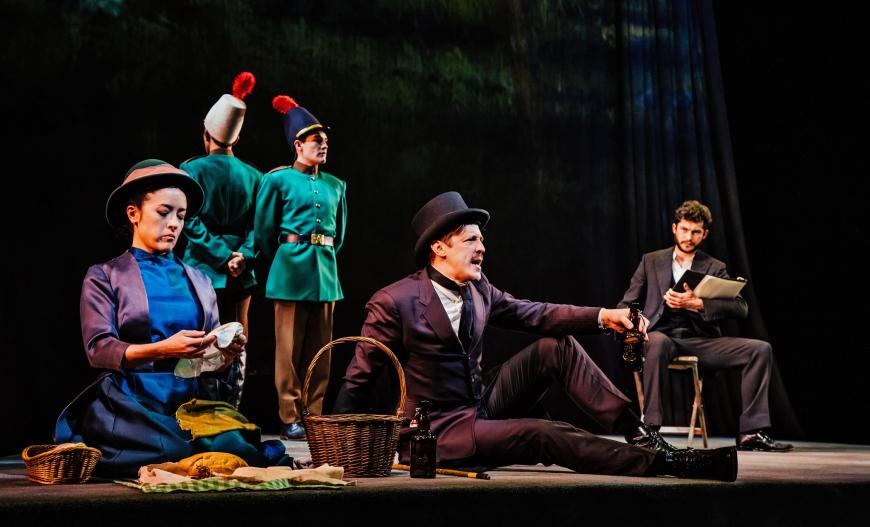
What may be lacking in orchestral firepower, however, is more than made up for by a cast worthy of the masterpiece its members inhabit, with each role standing out as distinct and superbly crafted: Liz Larsen as the Old Lady (George’s mother) and Jennie Greenberry as her frustrated Nurse; Michael Manuel as the self-satisfied, soon-to-be-forgotten painter Jules and Emily Tyra as his vapid wife, Yvonne; and Brian Calì as the gruff Boatman, with Juliana Sloan and Jenni Barber as two shopgirls on the make (Celeste #1 and Celeste #2).
As Sondheim and Lapine would later do in Into the Woods, the fixed-tableau characters at the end of Act 1 come back as Act 2 begins, grousing about their condition. “It’s hot up here,” they complain. “This is not my good profile.” “Nobody can even see my profile.” “And then this monkey.” Finally, they mutiny en masse.
The scene shifts abruptly to the 1980s, where George’s great grandson, also named George (Phillips), is attending a commemorative event with his feisty 98-year-old grandmother, Marie (Alabado). They’ve gathered at the Art Institute of Chicago, where Seurat’s painting resides. A bevy of smug patrons, glad-handing foundation managers, and an art critic is there to see George unveil his latest Chromolume — an installation based on cascading dots of colored lights. It does not go well and, as the critic points out, is simply a repetition of his previous work. It is also a scene that only vaguely disguises Sondheim’s life in art.
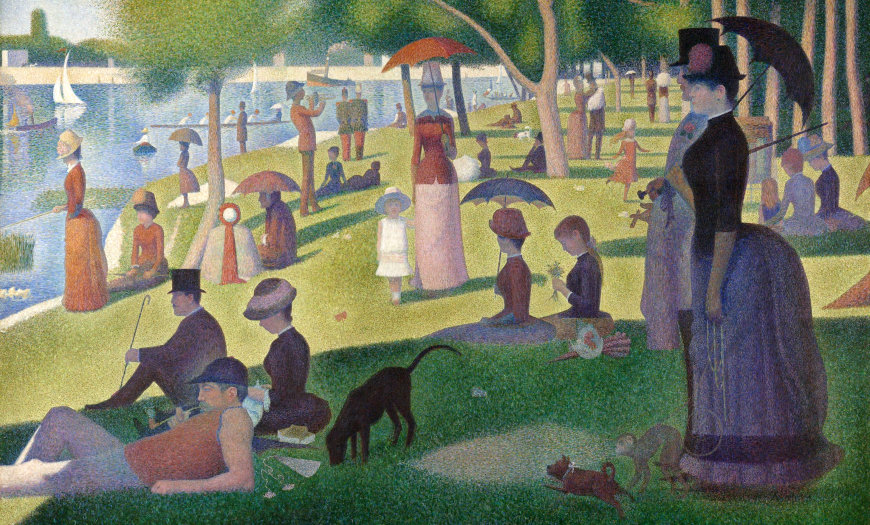
Sensing her grandson has reached a crisis point, Marie evokes the past, when her mother modeled for Seurat’s painting. “There are only two worthwhile things to leave behind,” she explains before the gentle ballad “Children and Art.”
As past and present begin to blur, Dot reappears. She urges the younger George to find the strength to “Move On” and explains how modeling for her George changed her forever, how it taught her the art of stillness, observation, and an appreciation for “Design. Composition. Tension. Balance. Light. And harmony.”


